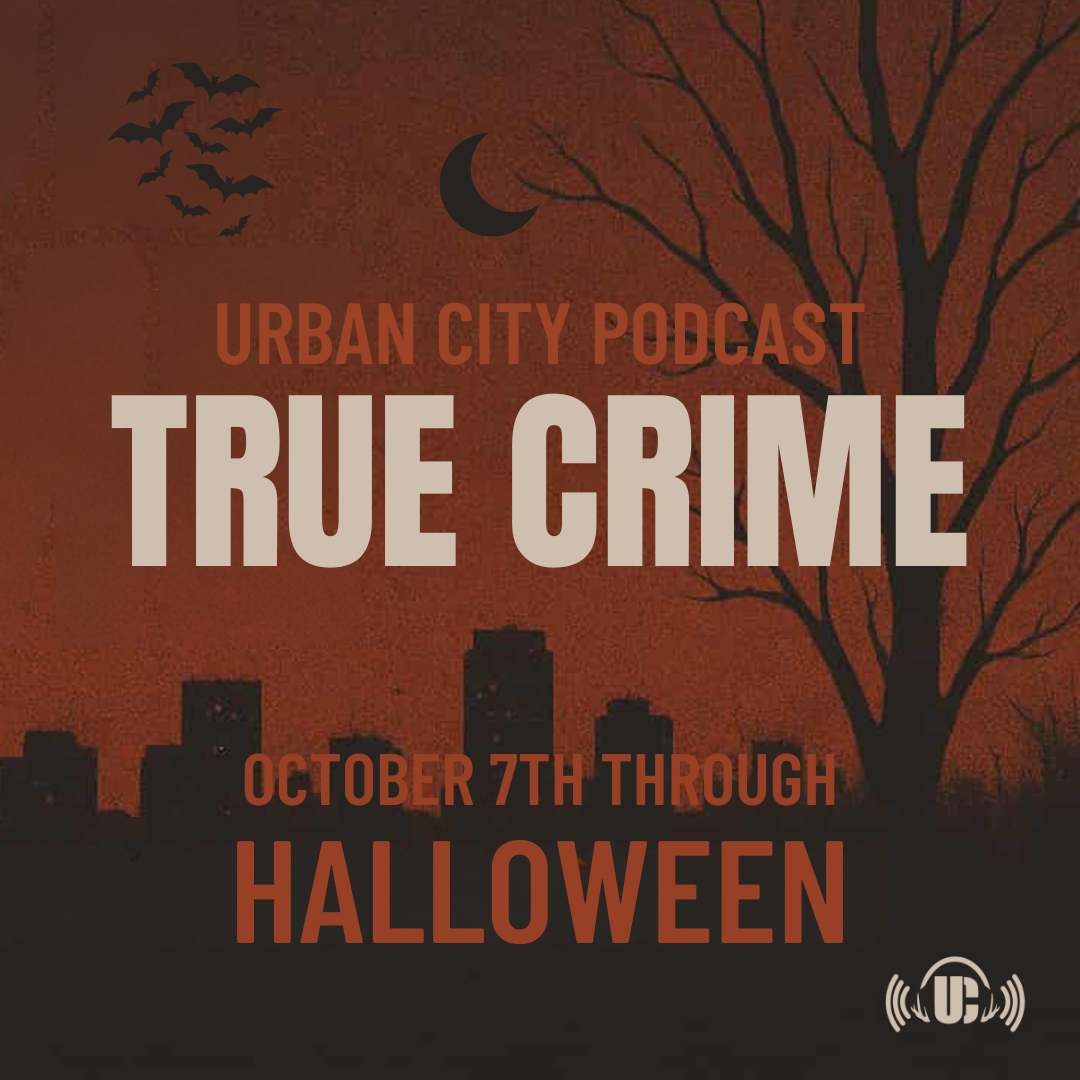You’re listening to Radio Health Journal, the trusted news source for medicine, science and
technology. I’m Elizabeth Westfield. I’m Mayan Vastabetancourt.
And I’m Greg Johnson. This week, the long road to understanding Alzheimer’s disease. It was
blamed on witchcraft.
It was blamed on evil priests who cursed, you know, women. It was based on all kinds of crazy
rumors. Families had had to live with that for a very long time.
But first, the genetic test that’s eliminating the trial-and-error approach to medicine. I was a bit
reluctant to even consider medication, simply because, what if it didn’t work? Now I’ve got to
start all over again. All that and more this week on Radio Health Journal.
If you have a lot of shopping to do for summer, then you’re actually in luck. Because at Macy’s,
the latest designer trends are here now. From swimmin’ sandals to match sets and linen suits,
all for 20% off.
But get this, spend $100 and get 25% off. Spend $200 and get 30% off. 30%! So the bigger your
summer, the better.
Because the more you buy, the more you save. But hurry, it all ends Sunday at Macy’s. Savings
off already-reduced prices, exclusions apply.
Progressive knows you’ve got enough to worry about in life. Hi, it’s your life, again. Feel like
another year is just slipping away? Yeah, remember all those New Year’s resolutions you made?
You still haven’t finished the first book.
Just 19 more to go. I mean, if we’re being honest, it wasn’t a very realistic goal. Have you ever
considered that you intentionally self-sabotage? So, what’s that about? So, let Progressive
protect your home on auto.
Because you’ve got enough to worry about. Progressive Casualty Insurance Company affiliates
and other insurers now available in all states. There’s no easy way to deal with grief.
With no roadmap or step-by-step guide, we’re all left having to figure out what our own unique
path to healing looks like. It’s a journey that’s riddled with fear, confusion, and frustration until
we find peace. But for Lisa Roberts, the finish line was nowhere to be found after she lost her
mom.
Instead of finding her footing, Roberts felt buried under the weight of her grief. I did not know
how to manage it and manage those feelings, manage life at that time, because it was just so
much going on. I had cared for her until she passed.
And so that was something that I have never had to do for someone. So that in itself was an
experience. And then adjusting to the loss was something that, you know, your mom, you
know, I just did not know how to deal with that.
Unable to find her way out of these feelings, Roberts got connected to a grief counselor. It was
the first time she could put a name to the foreign feelings she was drowning in — depression.
And though they agreed she needed to seriously consider medication, Roberts’ hesitation
stemmed from the fear of dedicating so much time to drugs that wouldn’t end up working.
I was a bit reluctant to even consider medication, simply because, you know, what if it didn’t
work? Now I got to start all over again. And then if that doesn’t work, then I got to start over.
Well, what if it makes me sick? You know, there were just so many things that were in my head.
And I was very, just very reluctant to even think about it. I knew that I needed to feel better
soon. And going through the trial and error, it just wasn’t, you know, you want to get well quick,
fast and in a hurry.
Three qualities that aren’t often used to describe the process of finding the right psychiatric
medication. People often need to try an antidepressant for eight weeks before evaluating its
performance, and many people go through several different drugs before finding one that
works for them. That’s a lot of wasted time for patients like Roberts, who was already at the end
of her rope.
As an alternative option to the trial and error approach, her counselor mentioned a DNA test
that could help direct her to the medications with the highest match potential. The field is called
pharmacogenomics, and the genetic tests predict how a person’s genes affect their body’s
response to medications. Jennifer Hawking says it does this by looking at how effective the
patient’s different metabolic pathways are at breaking down certain chemicals.
With some of our medications, particularly our antidepressants, if we are metabolizing them
too slowly, then the drug can accumulate over time. And that accumulation can have off-target
effects. So it can, you know, actually hang on to the receptors or the targets of these drugs a
little too long.
Or maybe they target another part of the body that they normally wouldn’t have if we were able
to kind of just process and eliminate the drugs as expected. So those are some of the side
effects that occur if we metabolize certain drugs too slowly. On the other hand, metabolizing a
drug too fast doesn’t allow us to get any of the benefits before it leaves our system.
Hawkins is the pharmacogenomics clinical specialist at Cleveland Clinic. She says that even
drugs under the same classification can be metabolized differently based on a person’s genetic
makeup. We have a class of antidepressants called selective serotonin reuptake inhibitors.
And even within that class, they’re metabolized differently. You know, they may have similar
actions, but their pathway of being broken down is different. And so we have to take the
different pathways into account.
And so I have patients who come in and say, like, well, I’ve tried these two SSRIs and they didn’t
work. So SSRIs must not work for me. I’m like, well, wait a second, actually, let’s take a step
back.
It may be that those two happen to go down this one specific pathway that maybe you had
decreased metabolism of, and that’s why you had the side effects. That’s why the drug didn’t
work. So instead of playing a guessing game, the DNA test gives some insight into how well
your different metabolic pathways work, which can then be matched up to drugs that use those
specific routes.
The test takes samples of DNA through a blood draw or a cheek swab, then gets sent off to a
lab that breaks down the person’s genetic results. It’s then up to the medical provider to
interpret this data and recommend different medications and doses that will have the best
odds of working. In the field of psychiatry, we do have some of that, but I think it’s a little bit
more complicated because, you know, these drugs, there’s even more nuances to it.
So there, sometimes we are able to give more specific recommendation of, yes, you need to
start at 50%, what most people would normally start at. Sometimes it’s a little bit more gray and
we just say like, well, you could start the usual dose, but, you know, instead of increasing dose
every week or two weeks, you might want to wait three or four weeks to see how the patient
does on this. When Roberts got her test results back, her counselor was able to interpret the
results and compile a list of medications believed to work best with her body.
She was able to see some medications that would not work well with me, with my system, with
some of the things that go on with me. And something, some medications that could possibly
work well. She was able to provide me with a list of medications that, well, maybe this one
would work for you.
And if it doesn’t, we can look at this. But I was able to see the list, the recommendations that
she had and hopefully avoid that trial and error. And luckily we did avoid that trial and error.
And it wasn’t this prolonged going back and forth. And that made a big difference with me.
Roberts found the right antidepressant on the first try.
But even with the extra guidance from Pharmacogenomics, not everyone gets that lucky. For
many people, they still have to make tweaks to find their personal sweet spot of medication.
Hawkins believes practitioners need to be completely transparent about the limitations of this
testing so the patients have a realistic expectation of the process.
One example of this is that even finding drugs that are metabolized normally won’t get rid of all
the risks and side effects. We’re not using Pharmacogenomics to eliminate all side effects. That
would be my dream.
But we anticipate that even in our metabolizers, there may be some mild side effects, for
example, a little bit of GI upset or maybe some mild headaches. What we’re trying to do is to
avoid the really severe side effects that cause patients to stop the medication or end up, like I
said, in the hospital. Many of the other limitations are directly connected to the amount of
knowledge that’s in the field.
Though they are currently looking at the metabolic pathways, there are other genetic variants
that contribute to how drugs affect the body. We’re still studying those. And I know that that’s
going to make a huge impact once there’s more studies out there that tell us, you know, what
to do if we see genetic variants in the targets.
Being able to be even more specific than where we are now. And of course, the patient’s
lifestyle has a huge effect that a DNA test can’t really take into account. Smoking, alcohol use,
and age are all big factors that affect liver function and can drastically impact how our system
processes medication.
Another factor patients need to be aware of is that there could be a difference in results based
on which lab your sample is sent to. These labs, they’re not necessarily sequencing someone’s
genome. They’re looking at particular spots.
And so if a lab doesn’t look at a particular spot, what they typically do is they tell the physician
or the pharmacist or whoever’s ordering the test, hey, this patient is a normal metabolizer. But
if I were to take that same patient sample and send it to lab B, where they look at that
particular spot in question, maybe that rare variant, I might get a different result back. And so
lab B may say, actually, this person is an intermediate metabolizer.
Labs look at different spots in the genome, partly due to the population they’re serving. Certain
populations may have a gene variant that’s rarer in other communities. So some labs may not
even test for that allele.
So there may be a variant that’s more common in, for example, in those of European descent
versus in those of Asian descent, for example. And if you’re using a test that covers variants
mostly in the European population, but your patient population is mostly Asian, then you’re
probably going to have a little bit of a mismatch in terms of results and interpretation. Which
means that it’s important to ask these questions the labs you and your doctor are considering.
Despite these limitations, Roberts says it was well worth her time and money. I’m here, plain
and simple. It’s worth being here.
I am here. I’m happy. I can be a part of my family’s life.
I can do the things that I want to do and manage. Hawking says one of the most valuable
aspects of pharmacogenomics is the control it gives patients over their care. Being able to say,
well, this particular patient has significantly decreased or poor metabolism of these three
drugs.
Not to say that we can’t use them. We’re going to have to significantly dose adjust, but maybe
due to concerns about side effects, we rule these out or we push them to the bottom of the list.
And that’s really where, you know, I love working with our psychiatrists because they’re able to
have these conversations with patients and say, like, what’s your biggest concern? Is it the
concern of taking a medication and not working or is it the concern of side effects? Because
that can really influence a patient’s decision on whether they take a medication or stay on a
particular medication.
The field of pharmacogenomics is continuing to grow with each new piece of research. So while
it currently analyzes metabolic pathways, the options for future applications is limitless. Some
labs have even started including extra data in the hopes that it will one day soon be valuable.
And I tell patients all the time, I may obtain some results where I would tell you, like, I don’t
have any or I don’t have enough studies to be able to use this in your care today. But knowing
this, I encourage patients to always reach out to us every few years and say, like, hey, where are
the studies? Is there enough info out there now for you to be able to use these other
information that was obtained and tested for to now help further better my care? Interpreting
the data can be complex, but it may one day lead to a future where we get the best medication
for our unique body the very first time. You can find more information about Jennifer Hawkins,
Lisa Roberts and all of our guests on our website, RadioHealthJournal.org. Our writer producer
is Kristen Farah.
Our executive producer is Amira Zaveri. I’m Elizabeth Westfield. Coming up, how a mountain
village in Colombia may hold the key to a cure for Alzheimer’s disease.
When RadioHealth Journal returns. Sometimes I struggle to get to sleep. My body stopped for
the day, but my mind is still running.
So I take Z-Quil. Z-Quil, the world’s number one sleep aid brand, has a range of non-habit
forming products to fit you and your family’s needs. Invest in a great night’s sleep for the best
you tomorrow.
I’m awake and ready to take on anything. Better days start with Z-Quil Nights. Explore our
products at Z-Quil.com. Use as directed.
Keep out of reach of children. Shopping with your parents can be embarrassing. Why would
they sell jeans with holes in them? I’m going to speak to the manager.
Mom! That hoodie is giving. You should get it. YOLO.
Thanks to the Chase mobile app, your kid can shop independently while you keep an eye on
their spending. So you can go from… We can be twinsies. To… How was shopping? Saw you
stayed on budget.
Thanks, mom. Freedom for kids. Control for parents.
That’s family banking from Chase. Account subject to approval. Chase mobile app is available
for select mobile devices.
Message and data rates may apply. J.P. Morgan, Chase Bank, N.A., member FDIC. Imagine
belonging to a large extended family knowing that half your relatives will die in their mid
forties.
And worse, that you could be next in line for this strange disease that’s ravaged your family for
hundreds of years. With no cure, your only option is to go through life wondering if the illness
will finally come for you. Sounds like a nightmare, right? And yet, this isn’t the plot of a
dystopian novel.
It’s a reality for over 5,000 residents of small mountain villages called Hamlets surrounding
Medellin, the second largest city in Colombia. Researchers did a lot of work to try and
understand in the 90s and early 2000s how this disease even got there. Because it was
understood to them from interviews that it was very old, that it had been there a very, very long
time in these rural farming communities.
And there were certain characteristics of the people that really got the researchers’ attention. I
mean, there were these giant Catholic conservative families. They also tended to be white
people.
The assumption was that this probably came from sort of a Spanish colonist. That’s Jenny Aaron
Smith, author of Valley of Forgetting, Alzheimer’s Families and the Search for a Cure. In the
1980s, researchers finally discovered that the mysterious illness plaguing this community was
Alzheimer’s disease.
They’d been suffering with this terrible illness for hundreds of years. You know, it was blamed
on witchcraft. It was blamed on evil priests who cursed, you know, women.
It was based on all kinds of crazy rumors. And it really families had had to live with that for a
very long time and a stigma. It was just 40 years ago that these Hamlets finally got some
answers.
A Colombian neurologist by the name of Francisco Lopera, working at Medellin clinic, identified
the disease as Alzheimer’s. He began treating farmers who were coming into his clinic. It was a
public hospital clinic with dementia in their 40s.
Early Alzheimer’s cases were in the literature, but Dr. Lopera and his colleagues weren’t terribly
familiar with them. But what they did that was important was they went out to those farming
communities, you know, up in the mountains hours away from Medellin. And at the time, it was
very difficult to get to those communities.
You had to take a horse. You had to. They discovered in those tiny Hamlets more cases and
histories of people who had ended up in the public mental hospital in Medellin, which is where
many rural people took people in their families with mental illness and dementia.
Lopera quickly realized that he was dealing with something much bigger than a handful of
dementia cases. He started collecting family health histories and created vast genealogies
showing that all these people were related to one another. He also collected blood samples and
found something very unusual.
The people who got dementia all carried a single genetic mutation unique to that area. It’s the
same mutation researchers believe came from a Spanish conquistador centuries ago. The gene
wasn’t known until the mid 90s.
The gene on which this mutation occurs is called the presenilin gene. And these families had a
unique mutation, a mutation unique to them that came to be known as the paisa mutation. The
type of mutation is called an autosomal dominant mutation.
And so all that means is that it’s not on a sex linked chromosome. So it can go from a parent to
a child of either sex. Right.
And generally, the odds are 50 percent for each person born of a person with the mutation to
inherit that mutation. So 50 percent of the children of affected adults would get the disease in
their 40s. With further research, Lopera realized that this gene mutation affected the
production of a protein called amyloid beta.
One feature researchers believe to be a key part of Alzheimer’s is the buildup of plaque in the
brain caused by this protein. The amyloid hypothesis holds that amyloid beta, which is the first
brain protein to emerge in Alzheimer’s disease, is responsible sort of for the cascade of
neurodegeneration that occurs later and causes all the symptoms. What was interesting about
the early onset Alzheimer’s disease families is that, you know, their brains could be studied as
well because people donated their brains when they died.
And Dr. Lopera was very clever in how he got people to donate those brains. And what could be
seen then was how amyloid protein really flooded the brains of these individuals and how that
particular genetic mutation acted to spark the overproduction of amyloid in their brains. So
those were very important observations.
By the 1990s, Lopera’s work had garnered the attention of other Alzheimer’s researchers and
also pharmaceutical companies. In partnering with Lopera, their goal was to create an anti
amyloid drug that would prevent plaque buildup in the brain of patients. In their eyes, his clinic
was the perfect testing ground.
For eight years, members of this extended Colombian family participated in clinical trials,
hoping for a cure. They were well aware at the start of that trial that a lot of hopes rested on
them and that they weren’t just doing it for themselves, but they were doing it to help solve
global Alzheimer’s disease. So I think, you know, the heartbreak was on a personal level, but it
was on a bigger level than that, because ultimately you could argue that this population of
people who didn’t have amyloid in their brains when they started the drug, when they started
the trial, many of them didn’t have any evidence of amyloid in their brains, didn’t have
symptoms when they started the trial, were the ideal people in whom to test this class of drugs.
And it didn’t work in them. Along with the trial participants, this failed drug test dashed the
hopes of many other researchers and patients. However, scientists now question if they put all
their eggs in the wrong basket.
So the question was maybe did the early onset Alzheimer’s families sort of on some level steer
the field to an overemphasis on amyloid protein in the brain, where there might have been
many other things also going on in Alzheimer’s brains? One of the concerns with Alzheimer’s
disease in recent years, with all the drugs that are the new drugs available on the market,
essentially being developed based on the amyloid hypothesis, they are anti-amyloid drugs. The
question is, was familial early onset Alzheimer’s, Alzheimer’s that’s caused by a genetic
mutation in a certain gene and hits you at age about 45. Was it and does it remain a good
model for studying all Alzheimer’s disease? A potential answer to this question could lie in the
same Colombian families.
Illyria is a 76 year old woman from the extended family who also has the same mutated gene,
only she has no dementia. Researchers ignored her at first, thinking she was simply an outlier.
But when the anti-amyloid drugs failed, they flew Illyria out to Boston to take a second look.
There at Harvard, she got all kinds of advanced imaging and they could see something really
fascinating, which was that Illyria’s brain, Illyria’s very functional brain, I might add, was full of
amyloid protein, full of it, like a humongous load of amyloid plaques. And yet she really didn’t
have very much tau protein. Tau protein is the second protein seen in Alzheimer’s disease, and
it corresponds more, it’s responsible for the tangled neurons that are a hallmark of the disease.
And it correlates more closely to symptoms. So the more tau you have or the sooner you have
it, the more likely you are to have symptoms. Researchers attributed her resistance to yet
another mutated gene, this one affecting the tau protein.
That started the search for more genes like that, that might be able to blunt the effects of these
terrible genetic mutations and genetic factors that could be protective and that maybe you
could develop drugs based on. A theory scientists are still working on. While Smith’s book
documents research that didn’t pan out, it’s an important reminder that finding a cure for any
disease is a long and winding road.
Her book, Valley of Forgetting Alzheimer’s Families and the Search for a Cure, is available now
at bookstores and online. You can learn more about Jenny Aaron Smith and all of our guests by
visiting our website, RadioHealthJournal.org. Our Raider producer this week is Polly Hanson.
Our lead producer is Kristen Farah.
Our production manager is Jason Dickey. I’m Greg Johnson. Radio Health Journal returns in just
a moment.
At Charmin, we heard you shouldn’t talk about going to the bathroom in public, so we decided
to sing about it. Charmin Ultra Strong, you can use less, better than the rest. Charmin Ultra
Strong, your booty pass the clean test.
Diamond weave texture, it’s the best. Study up, teach a lesson all fresh. Your booty pass the
clean test.
Charmin Ultra Strong. Charmin Ultra Strong with diamond weave texture cleans better than a
leading one-ply brand, so you can use less. Enjoy the go with Charmin.
Two guys drove to work. Neither guy wore a seatbelt. One guy got a ticket.
One guy didn’t. The same two guys drove home. One guy wore a seatbelt.
One guy didn’t. One guy made it home. The guy not wearing a seatbelt didn’t.
Don’t risk it. Click it or ticket. Paid for by NHTSA.
If you have a lot of shopping to do for summer, then you’re actually in luck. Because at Macy’s,
the latest designer trends are here now. From swimmin’ sandals to match sets and linen suits,
all for 20% off.
But get this, spend $100 and get 25% off. Spend $200 and get 30% off. 30%.
So the bigger your summer, the better. Because the more you buy, the more you save. But
hurry, it all ends Sunday at Macy’s.
Savings off already reduced prices if exclusions apply. In your RV, progressive casualty
insurance company affiliates and other insurers not available in all states and situations.
Medical Notes this week.
A new breakthrough in ulcerative colitis treatment. As many as 900,000 Americans deal with
this chronic inflammatory disease. And though there are treatments available, they don’t work
for all patients.
Thankfully, two new therapies have been shown to be effective in both moderate and severe
cases. They both target proteins that play key roles in inflammation. The studies are published
in The Lancet and the New England Journal of Medicine.
Should food companies pay the FDA? The agency collects user fees from pharmaceutical
companies to help fund its safety research. Now experts are proposing that the food industry
gets on board. A new analysis in the journal Health Affairs expects this move to generate more
resources for the FDA.
For an agency that’s currently understaffed and underfunded, this could drastically aid its
regulation efforts. And finally, can doom scrolling actually benefit us? A new study shows that
adults tend to go on social media when feeling worried, sad or frustrated. These users are
actively trying to use social platforms to feel better.
And it works. Researchers noticed that people get a mood boost when sharing positive posts
and receiving likes or comments. And that’s Medical Notes this week.
I’m Mayan Vastabetancourt. You ever try fixing your car and realize you’re missing that one
part? Yeah, been there. That’s why eBay’s my go to.
They’ve got millions of parts guaranteed to fit. I’m talking brake pads for when yours have seen
one too many miles of stop and go. Oil filters because you don’t mess around with your engine
care.
Even got this cold air intake on my watch list. I might just go for it. To keep the ride cool and
your DIY street hot.
Find all the parts you need at prices you love. Guaranteed to fit every time. eBay.
Things. People. Love.
Eligible items only. Exclusion supply. This is the sound of captivity.
This is the sound of rescue. And this is the sound of freedom. Give Armenia’s captive bears a
second chance by supporting International Animal Rescue.
Call 508-826-1083 or search The Great Bear Rescue to learn more. Thank you for joining us this
week and every week as we break down the science stories you need to know. You can find all
of our past segments and guests on our website, RadioHealthJournal.org or wherever you listen
to podcasts.
Follow us on Instagram, Facebook and X for daily content. And tune in next week for another
edition of RadioHealth Journal















